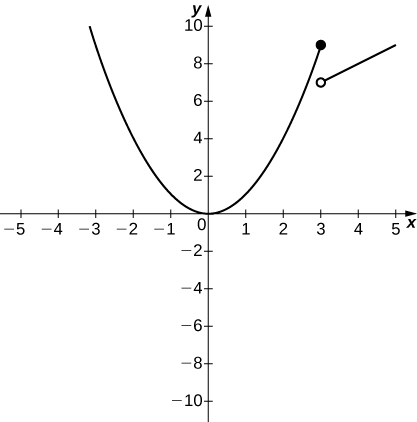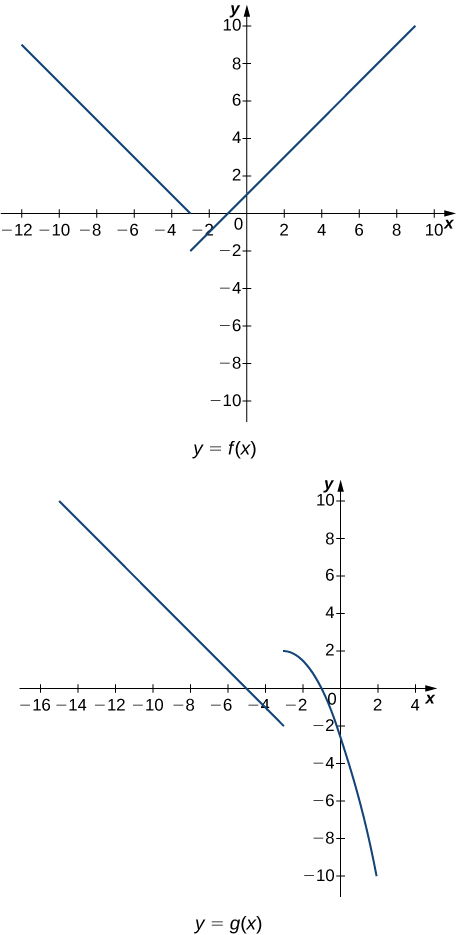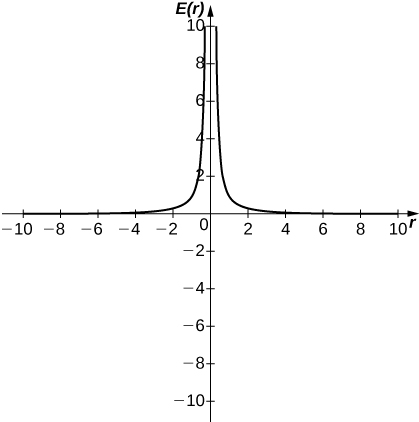2.3E: Exercises for Section 2.3
( \newcommand{\kernel}{\mathrm{null}\,}\)
In exercises 1 - 4, use the limit laws to evaluate each limit. Justify each step by indicating the appropriate limit law(s).
1) limx→0(4x2−2x+3)
- Answer
-
Use constant multiple law and difference law:
limx→0(4x2−2x+3)=4limx→0x2−2limx→0x+limx→03=0+0+3=3
2) limx→1x3+3x2+54−7x
3) limx→−2√x2−6x+3
- Answer
- Use root law: limx→−2√x2−6x+3=√limx→−2(x2−6x+3)=√19
4) limx→−1(9x+1)2
In exercises 5 - 10, use direct substitution to evaluate the limit of each continuous function.
5) limx→7x2
- Answer
- limx→7x2=49
6) limx→−2(4x2−1)
7) limx→011+sinx
- Answer
- limx→011+sinx=1
8) limx→2e2x−x2
9) limx→12−7xx+6
- Answer
- limx→12−7xx+6=−57
10) limx→3lne3x
In exercises 11 - 20, use direct substitution to show that each limit leads to the indeterminate form 0/0. Then, evaluate the limit analytically.
11) limx→4x2−16x−4
- Answer
- limx→4x2−16x−4=16−164−4=00;
then, limx→4x2−16x−4=limx→4(x+4)(x−4)x−4=limx→4(x+4)=4+4=8
12) limx→2x−2x2−2x
13) limx→63x−182x−12
- Answer
- limx→63x−182x−12=18−1812−12=00;
then, limx→63x−182x−12=limx→63(x−6)2(x−6)=limx→632=32
14) limh→0(1+h)2−1h
15) limt→9t−9√t−3
- Answer
- limx→9t−9√t−3=9−93−3=00;
then, limt→9t−9√t−3=limt→9t−9√t−3√t+3√t+3=limt→9(t−9)(√t+3)t−9=limt→9(√t+3)=√9+3=6
16) limh→01a+h−1ah, where a is a real-valued constant
17) limθ→πsinθtanθ
- Answer
- limθ→πsinθtanθ=sinπtanπ=00;
then, limθ→πsinθtanθ=limθ→πsinθsinθcosθ=limθ→πcosθ=cosπ=−1
18) limx→1x3−1x2−1
19) limx→1/22x2+3x−22x−1
- Answer
- limx→1/22x2+3x−22x−1=12+32−21−1=00;
then, limx→1/22x2+3x−22x−1=limx→1/2(2x−1)(x+2)2x−1=limx→1/2(x+2)=12+2=52
20) limx→−3√x+4−1x+3
In exercises 25 - 32, assume that limx→6f(x)=4,limx→6g(x)=9, and limx→6h(x)=6. Use these three facts and the limit laws to evaluate each limit.
25) limx→62f(x)g(x)
- Answer
- limx→62f(x)g(x)=2(limx→6f(x))(limx→6g(x))=2(4)(9)=72
26) limx→6g(x)−1f(x)
27) limx→6(f(x)+13g(x))
- Answer
- limx→6(f(x)+13g(x))=limx→6f(x)+13limx→6g(x)=4+13(9)=7
28) limx→6(h(x))32
29) limx→6√g(x)−f(x)
- Answer
- limx→6√g(x)−f(x)=√limx→6g(x)−limx→6f(x)=√9−4=√5
30) limx→6x⋅h(x)
31) limx→6[(x+1)⋅f(x)]
- Answer
- limx→6[(x+1)f(x)]=(limx→6(x+1))(limx→6f(x))=7(4)=28
32) limx→6(f(x)⋅g(x)−h(x))
[T] In exercises 33 - 35, use a calculator to draw the graph of each piecewise-defined function and study the graph to evaluate the given limits.
33) f(x)={x2,x≤3x+4,x>3
a. limx→3−f(x)
b. limx→3+f(x)
- Answer
-

a. 9; b.7
34) g(x)={x3−1,x≤01,x>0
a. limx→0−g(x)
b. limx→0+g(x)
35) h(x)={x2−2x+1,x<23−x,x≥2
a. limx→2−h(x)
b. limx→2+h(x)
In exercises 36 - 43, use the following graphs and the limit laws to evaluate each limit.

36) limx→−3+(f(x)+g(x))
37) limx→−3−(f(x)−3g(x))
- Answer
- limx→−3−(f(x)−3g(x))=limx→−3−f(x)−3limx→−3−g(x)=0+6=6
38) limx→0f(x)g(x)3
39) limx→−52+g(x)f(x)
- Answer
- limx→−52+g(x)f(x)=2+(limx→−5g(x))limx→−5f(x)=2+02=1
40) limx→1(f(x))2
41) limx→13√f(x)−g(x)
- Answer
- limx→13√f(x)−g(x)=3√limx→1f(x)−limx→1g(x)=3√2+5=3√7
42) limx→−7(x⋅g(x))
43) limx→−9[x⋅f(x)+2⋅g(x)]
- Answer
- limx→−9(xf(x)+2g(x))=(limx→−9x)(limx→−9f(x))+2limx→−9g(x)=(−9)(6)+2(4)=−46
For exercises 44 - 46, evaluate the limit using the squeeze theorem. Use a calculator to graph the functions f(x),g(x), and h(x) when possible.
44) [T] True or False? If 2x−1≤g(x)≤x2−2x+3, then limx→2g(x)=0.
45) [T] limθ→0θ2cos(1θ)
- Answer
-
The limit is zero.
![The graph of three functions over the domain [-1,1], colored red, green, and blue as follows: red: theta^2, green: theta^2 * cos (1/theta), and blue: - (theta^2). The red and blue functions open upwards and downwards respectively as parabolas with vertices at the origin. The green function is trapped between the two.](https://math.libretexts.org/@api/deki/files/1926/CNX_Calc_Figure_02_03_206.jpeg?revision=1&size=bestfit&width=342&height=347)
46) limx→0f(x), where f(x)={0,x rationalx2,x irrrational
47) [T] In physics, the magnitude of an electric field generated by a point charge at a distance r in vacuum is governed by Coulomb’s law: E(r)=q4πε0r2, where E represents the magnitude of the electric field, q is the charge of the particle, r is the distance between the particle and where the strength of the field is measured, and 14πε0 is Coulomb’s constant: 8.988×109N⋅m2/C2.
a. Use a graphing calculator to graph E(r) given that the charge of the particle is q=10−10.
b. Evaluate limr→0+E(r). What is the physical meaning of this quantity? Is it physically relevant? Why are you evaluating from the right?
- Answer
-
a.

b. ∞. The magnitude of the electric field as you approach the particle q becomes infinite. It does not make physical sense to evaluate negative distance.
48) [T] The density of an object is given by its mass divided by its volume: ρ=m/V.
a. Use a calculator to plot the volume as a function of density (V=m/ρ), assuming you are examining something of mass 8 kg (m=8).
b. Evaluate limx→0+V(ρ) and explain the physical meaning.
Contributors and Attributions
Gilbert Strang (MIT) and Edwin “Jed” Herman (Harvey Mudd) with many contributing authors. This content by OpenStax is licensed with a CC-BY-SA-NC 4.0 license. Download for free at http://cnx.org.

